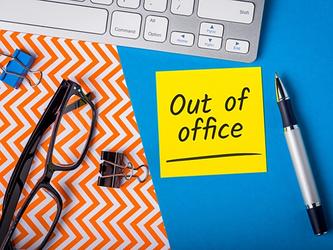How to beat burnout: Stress at work
Burnout and exhaustion are becoming ever more prominent in the research industry, with heavy workloads and impending deadlines cited as the main causes.
But as a leader, how do you deal with this? Running a successful business depends on a healthy flow of work – so what do you do when the very thing that is keeping your company afloat is the same thing that is dragging your people down and burning them out?
Here are five factors to bear in mind to enable you to start tackling the problem of overwhelming workloads and challenging ways of working at source.
Face facts
The first step in dealing with a problem is acknowledging that it actually exists and understanding where it’s coming from.
It’s time to take a hard look at things and face the truth. As a leader, have you made it your business to really understand what’s going on within your team? You might know people are busy and stressed – but have you dug beneath the surface to understand specifically what is causing the stress, where the key challenges are, and what impact it’s all having?
The first thing you can do is put some time into a full and frank evaluation of workloads, ways of working and wellbeing in your company. Where are the pressure points? What would make things easier for people? Are you doing all that you can to relieve the pressure – or are you just papering over the cracks? Talk to your team, listen to them carefully and be brutally honest in your analysis, as painful as it might be.
Focus on prevention, not cure
Offering your team mental health days, lunchtime yoga and the like is nice, but it’s not the whole answer, because they put the onus on the individual to cope better with the problem that their workplace has created.
There’s definitely a role for these initiatives, but do they actually help when you’ve got more work than you can handle; when you have a deadline that means you’re going to have to work late into the evening, or at the weekend... again? I’d argue they don’t, because there isn’t time to take advantage of them properly.
Consider how you can remove the problem, rather than just giving people ways to cope with it. I know how challenging this is. The obvious solution to overworking is having less work, or employing more people, both of which come at a cost, and that is what makes this problem so difficult.
But we are researchers, so turn all those skills that you have – analysis, and creative and strategic thinking – towards your own business. What can you do to take away the problem?
Look at your systems and processes, your tech, your pricing models, your culture, your client relationships – and start making changes.
Maybe you need to be bold and brave in the choices you make; consider the impact on your team of creating healthier, more manageable ways of working, and, in turn, how that will affect their performance.
If cost is still a barrier, consider this: by not addressing this issue, people will burn out and leave, and your business will get a bad reputation – and that surely is too high a price to pay.
Get better together
All of us, agencies and clients alike, face pressure – and all too often, I think, we pass it around like a hot potato, trying to offload it on to others, or make it ‘their problem’, rather than addressing where it’s coming from and how to solve it together.
I firmly believe that we need to work better together to understand each other’s challenges. I’m also of the opinion that the industry will never see the change it needs unless this happens.
So, why not start talking? Open the doors of communication with your clients or agencies. Nobody wants to be burnt out or overwhelmed. Let’s start an honest, transparent dialogue with each other and find a way to deal with the pinch points that cause undue stress and pressure. It’s not the whole answer, but I would argue that a shared commitment to a healthier, less stressful way of working has got to be a great start.
Walk the walk
Your influence as a leader is of the utmost importance. It’s impossibly difficult for people to address their crushing workloads if their bosses don’t take control and lead by example. Mixed messages result in confusion and resentment – so don’t tell people their wellbeing is important, but then set a culture that creates stress and overwhelms them.
Don’t tell your team that it’s OK to say no, push back or switch off, if those are things that you don’t do. You need to give your team permission, and enable them to trust you, and the best way to do that is through actions, not words.
The bottom line is this: no matter how flat your organisational hierarchy, our brains are hardwired to copy the behaviour of the higher-status person. Don’t underestimate the significance of this. ‘Do as I say, not as I do’ doesn’t work with kids, and it doesn’t work with adults either.
My final piece of advice is simplicity itself: do not leave people’s wellbeing to luck. By not taking action, that’s precisely what you are doing. Hoping for the best is not a good business strategy. People will burn out and they will quit – that’s the one thing that is certain. Be prepared to commit yourself to real, meaningful change.
Stephanie Rowley is an executive coach for research and insights professionals
This article is from the July 2022 issue of Impact magazine.

We hope you enjoyed this article.
Research Live is published by MRS.
The Market Research Society (MRS) exists to promote and protect the research sector, showcasing how research delivers impact for businesses and government.
Members of MRS enjoy many benefits including tailoured policy guidance, discounts on training and conferences, and access to member-only content.
For example, there's an archive of winning case studies from over a decade of MRS Awards.
Find out more about the benefits of joining MRS here.













0 Comments